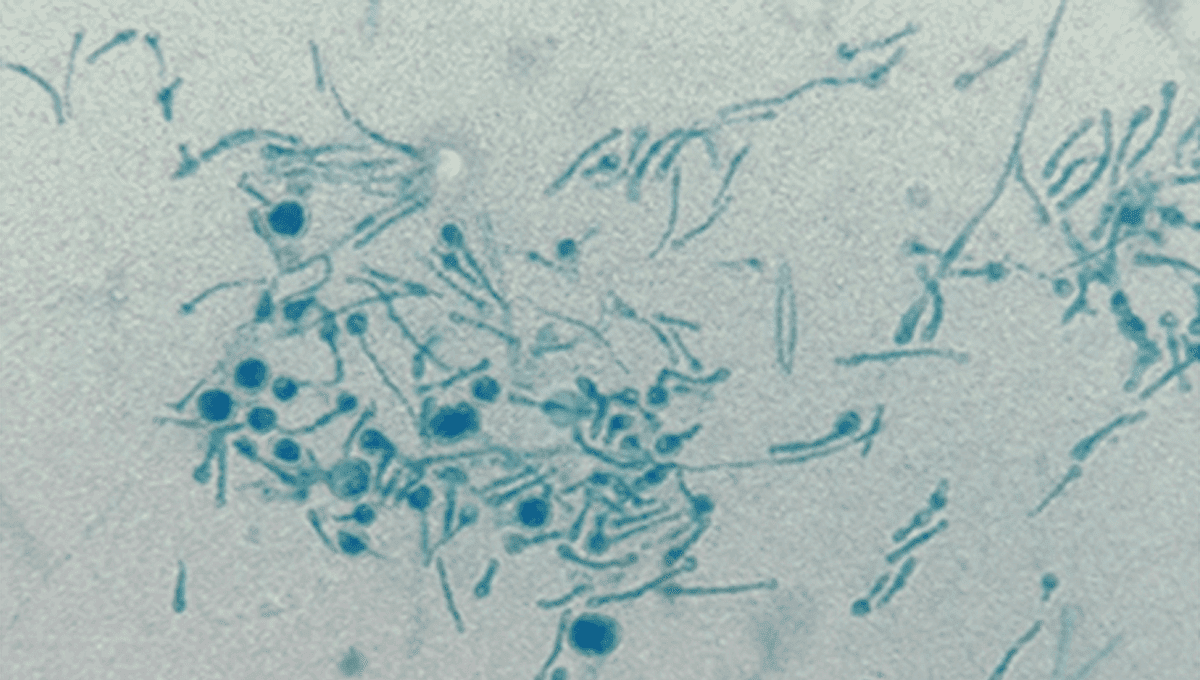
Doctors have reported the first case of a human infection by Chondrostereum purpureum. The fungus causes the disease silver leaf in plants, which causes the leaves of an infected tree branch to turn a silvery color, before killing the branch.
A 61-year-old patient from the eastern region of India sought medical attention for a number of symptoms, including a hoarse throat, fatigue, a cough, and difficulty swallowing. A chest X-ray taken by the hospital looked normal, but a CT scan taken of his neck showed an abscess, which was then sampled and sent for analysis.
This wasn’t as easy as they’d hoped, and after several failed attempts to identify strains of fungi within the pus, it was sent to the WHO collaborating Centre for Reference & Research on Fungi of Medical Importance. It was here that the DNA was sequenced, and they identified it as chondrostereum purpureum.
“The patient denied having worked with such a plant pathogen,” the team says in the case report of the patient, who was in fact a plant mycologist, “but he confirmed that he was working with decaying material and other plant fungi for a long time as part of his research activities.”
As HBO zombie show The Last Of Us has drawn our attention to lately, there are some fungi that can infect human hosts (although luckily we don’t have to worry about Ophiocordyceps).
“Among the millions of fungi present in the environment only a few hundreds of fungi are able to infect human and animals,” the team explained. “That animal and human diseases can be caused by plant pathogens is a new concept that raises serious questions regarding the propensity of such infection to occur in healthy as well as immunocompromised individuals.”
“If the fungi can escape the phagocytosis pathway and is able to evade the host immune system, then they can establish themselves as human pathogens. Those fungal species that are able to grow at 35–37 °C [95-98.6°F] can become a human pathogen.”
New fungi have made that leap to becoming human pathogens in recent decades. The World Health Organization currently lists 19 fungal threats to human health, with four listed as “critical priority pathogens”. These are Aspergillus fumigatus, which can kill between 47 and 88 percent of those it infects; Candida albicans, which is more common and kills 20-50 percent of infected individuals; Cryptococcus neoformans, as it has a tendency to infect the brain; and Candida Auris, which is especially good at evading antifungal medication.
In this case, the infection was likely picked up by working in close proximity to the fungus. The team believes that other fungi could make that same leap.
“The worsening of global warming and other civilization activities opens Pandora’s Box for newer fungal diseases,” the team concludes. “Few thermally intolerant fungi with pathogenic potential can […] acquire the ability to survive at body temperatures. This threat is magnified as some fungi can take the benefit of a natural selection-adaptation strategy, and therefore to adapt to higher temperature by thermal selection.”
Source Link: First Case Of Human Infection By Silverleaf Fungus That Usually Infects Trees